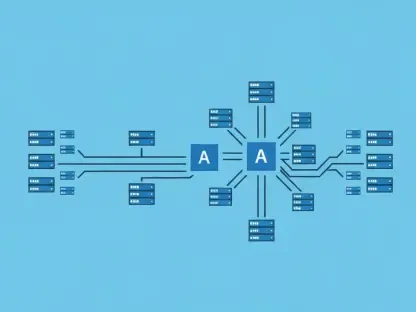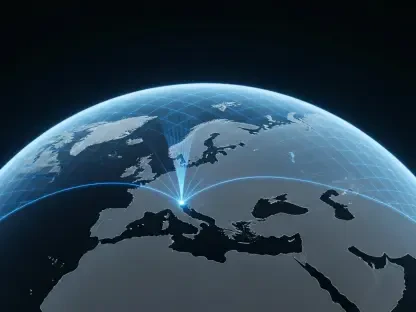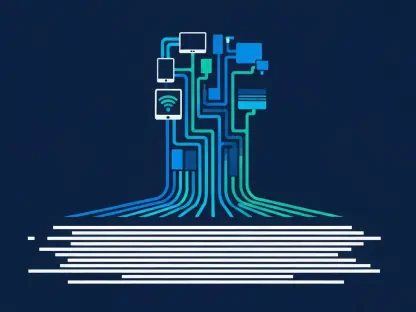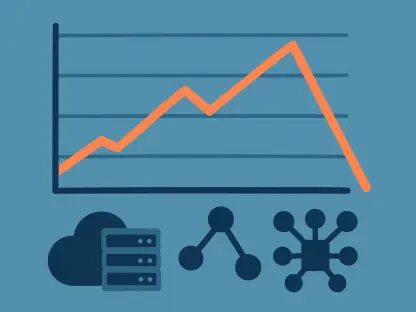World leaders will once again convene for the 28th annual Conference of the Parties (COP28), taking place in Dubai from November 30th to December 12th, 2023. This year, leaders will focus on evaluating progress against the Paris Agreement in what’s being termed the Global Stock Take. Technology and innovation will increasingly play a crucial role in climate change, offering solutions to complex issues and regulating the ICT industry, which is forecasted to contribute 14% of global carbon emissions by 2040.
Technology and innovation are increasingly focal points in climate change discussions, and key focal areas at COP28. With topics like “Blockchain’s Potential and Responsible Implementation”, and the “Potential of Supercomputing Technology in Climate Research and Global Access Challenges”, the discussions about integration and regulation of technology for climate success will be central to the future of society. Sustainable software development sits at the intersection of technology and sustainability, providing developers with a set of parameters and practices to increase energy efficiency and decrease carbon emissions.
What does sustainable software development entail?
The race to ensure a climate-secure future is on, with scientists and world leaders working to prevent an increase in global temperatures beyond 1.5℃. Beyond this point, experts warn that we could expect increased heat waves, longer periods of warm weather, and shorter colder seasons. The technology sector has a significant role to play in not only creating solutions to mitigate climate change, but also to limit the industry’s carbon footprint. This is where sustainable software development is vital and focuses on creating carbon and energy-efficient code and hardware, encompassing:
- Software development
- Software architecture
- Hardware design
- Data center design
- Energy generation
- Climate change
One of the more surprising discoveries in sustainable software development is that code is central to sustainability. While it can be challenging to imagine code-writing as an activity tied to sustainability efforts, there is a set of practices that allows developers to produce energy efficient and low-carbon outcomes. In order for code to be considered sustainable, it needs to be efficient, clean, and lean. Together, the trifecta of writing efficient, clean, and lean code ensures that software is created intentionally; by reducing redundant lines of code (LOC), and organizing code according to best practices. Prioritizing energy efficiency, sustainable software development is a key proponent for climate change mitigation and adaptation. Cross-border and cross-sectoral collaboration are vital elements for climate action, and efficient, clean, and lean code is the foundation for this.
This brings us smoothly to the topic of open source software (OSS). Sustainable software development is a tool to facilitate seamless collaboration across geographies and industries, allowing leaders to leverage a wider foothold. This is another reason why efficient, lean, and clean code is necessary. When code is well-organized and efficient, collaboration is seamless, which is vital in tackling climate change as a global group project. With no barriers to access, open source is an invaluable tool to engage in knowledge sharing, allowing developers to leverage innovations in environmentally friendly software.
Automated bug testing is another primary driver of sustainable software development. Bug-free software is a metric used to measure the success of a software program, but it is equally an indicator of sustainability. Code remediation is a resource-intensive activity, requiring additional time, power, and energy. By automating bug testing and building it into the software development lifecycle (SDLC), developers can ensure their code-writing process is optimized—ensuring their outputs are sustainable and compliant with code standards.
Sustainable Software Development and COP28
This year at COP28, world leaders will gather to revisit the Paris Agreement, ratified in 2015 and implemented in November 2016. Now in its monitoring and evaluation phase, aptly called the Global Stock Take, the 195 nations that signed the Agreement will gather to assess their efforts and chart a way forward. What is immediately clear to experts is that globally, we are not where we should be in terms of capping the increase in global temperature at 1.5℃. Technology and Innovation are primary players in these discussions, as both a contributor to carbon emissions and as a potential solution to complex challenges in this sector. Experts have reported that 220 gigatons of carbon needs to be offset by 2030 to ensure we’re back on track toward the goal of 1.5℃. Technology is a massive driver of this ambitious goal, and green software engineering will be key to creating an energy-efficient future.
Open source software (OSS) is one of the tools touted as a vehicle for sustainable software development. With a low barrier to entry, OSS allows people to work across borders to seamlessly collaborate and share best practices, while leveraging crowdsourced creativity to solve the complex challenges that climate change poses. Open source projects account for a large percentage of global sustainable software development. The Linux Foundation is leading the charge in this, with over 1,000 projects currently on offer that aim to leverage international participation and best practices in creating solutions for climate change. It is estimated that $5 trillion a year is required to transition to a green economy, one that encourages mitigation, adaptation, and resilience. Open source technology has the ability to ease some financial burdens.
“I am thrilled to share new research at COP28 that illustrates the myriad Linux Foundation projects as transformative, digital public goods vital to the acceleration of the UN Sustainable Development Goals.” – Hilary Carter, SVP Research & Communications, Linux Foundation Research.
AI and Climate Change
Artificial Intelligence has a key role to play in climate change mitigation and adaptation efforts. Ahead of COP28, the United Nations has recently launched an AI Advisory Board. AI has the ability to efficiently and accurately manage large data models, making its use in climate change invaluable. With the ability to process large quantities of data, AI also provides data-driven insights that power decision-making at all levels. With the ability to process large quantities of data, AI also provides insights that empower data-driven solutions for climate action around the world.
One of the main applications of predictive analytics is the ability to derive weather patterns, improving coordination for disaster prevention teams. Extreme weather events displace people, adding a humanitarian element to climate change, and being able to accurately predict these extreme weather events allows for streamlined and robust preparation in times of drought, flooding, hurricanes, tornadoes, and more. This is essentially a life-saving measure in a time when weather is increasingly unpredictable, and the effects of climate change are being experienced more.
Climate Change and the Cloud
Cloud computing has evolved into a powerful tool for sustainability, with major tech companies like Microsoft, Amazon, and Google having made commitments to reduce the carbon emissions of their data centers. The clear alternative to on-premises data centers is cloud servers, with studies showing that AWS can lower IT carbon footprints by almost 90%. In contrast, Google’s cloud data centers boost computing capacity by six times for the same electrical power as five years ago. Microsoft Cloud has been making great strides with its energy efficiency strategy, outstripping on-premise centers by as much as 93%. Microsoft Cloud for Sustainability is an initiative the organization launched to assist companies in managing and achieving their sustainability goals. This is a great example of sustainable software development, as they use Software as a Service (SaaS) solutions for real-time tracking of data sources to speed up integration and reporting, and to generate data insights with accurate carbon accounting.
Sustainable software development has an invaluable role to play in ESG, and forms a significant part of organizations’ strategies in compliance with global goals. By adhering to coding standards and best practices, developers can fine-tune software outcomes to increase energy efficiency, and decrease carbon emissions. Further gains toward sustainability can be made through collaboration, and the principles of sustainable software development are instrumental in facilitating seamless partnerships across borders and industries. In the race to solve the complex issues climate change presents, AI can offer considerable aid to decision-makers, synthesizing large amounts of data and offering data-driven insights and predictive analysis. The goal of stemming global warming at 1.5℃ requires innovation, which technology can provide in accordance with sustainable software development guidelines.









